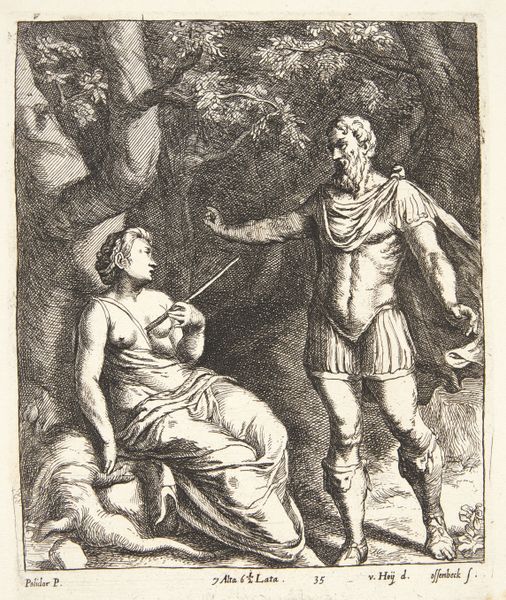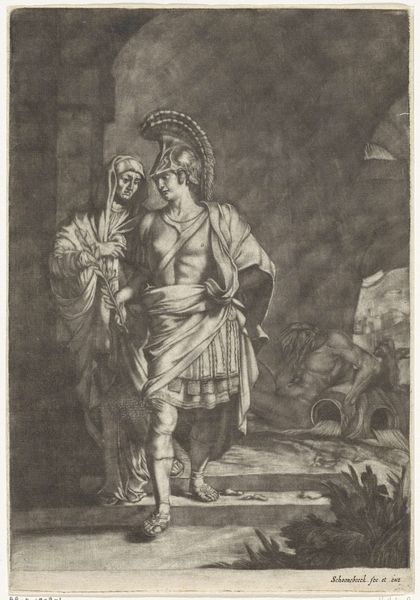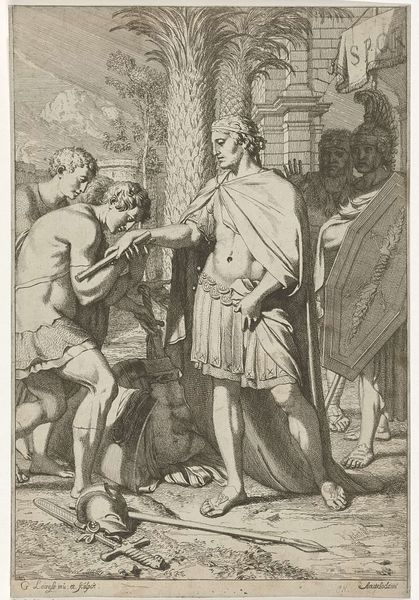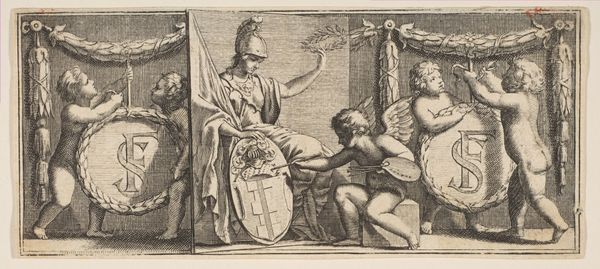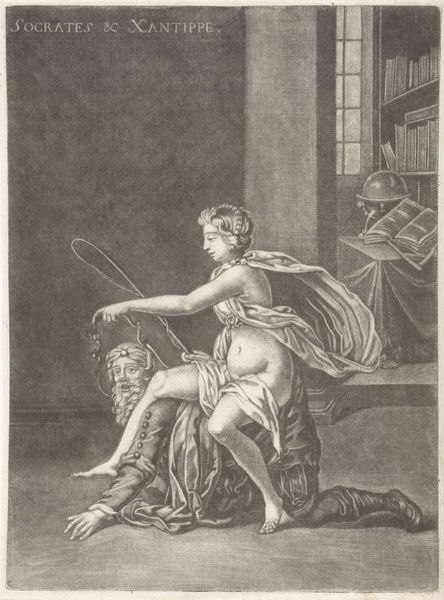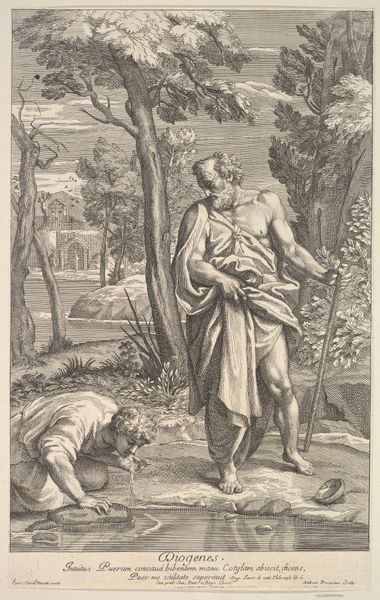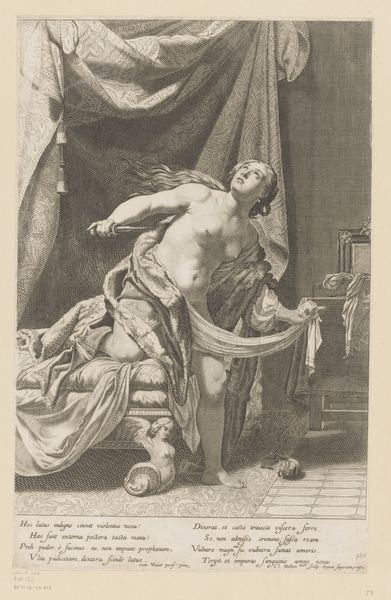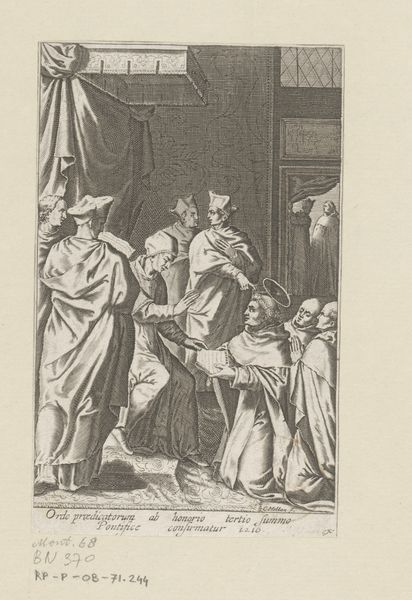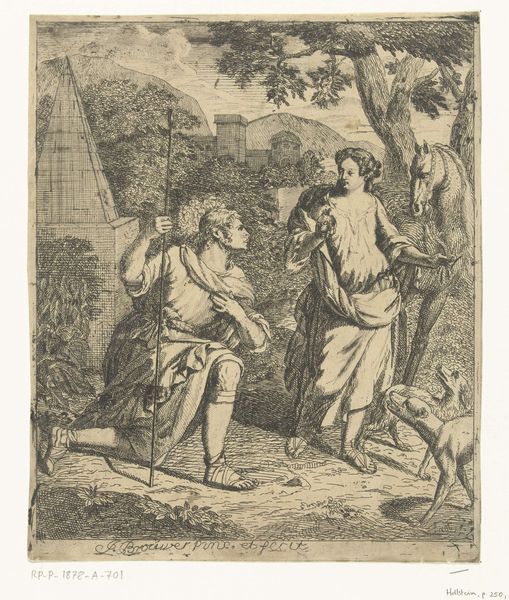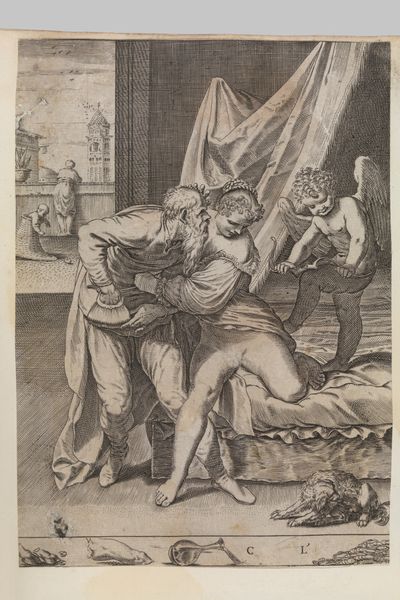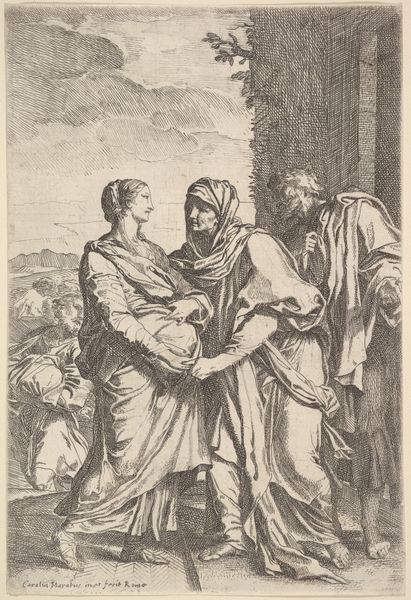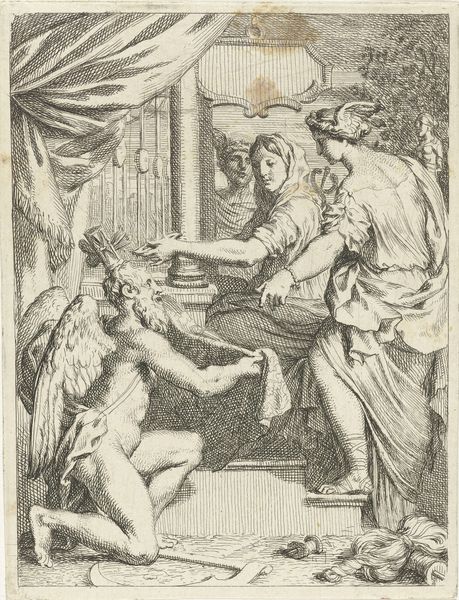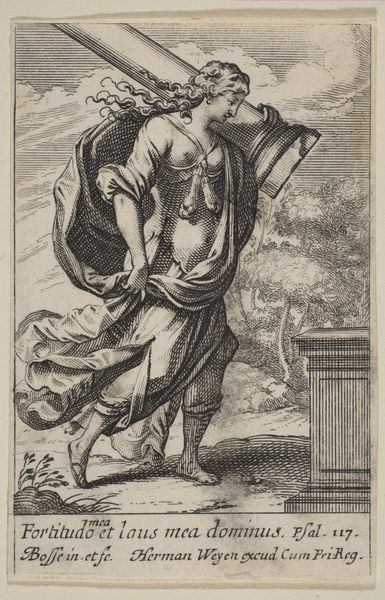
print, etching
#
baroque
# print
#
etching
#
figuration
#
history-painting
Dimensions: sheet: 20.2 × 15.6 cm (7 15/16 × 6 1/8 in.), cut to platemark
Copyright: National Gallery of Art: CC0 1.0
Curator: This etching, dating to about 1670, is titled "Aeneas and the Sibyl" and was created by Gerard de Lairesse. The scene depicts the figures stepping down into what appears to be the entrance of the Underworld. Editor: It’s struck me immediately how dramatic and somewhat gothic this depiction feels. The lighting and shading give such a sense of depth and foreboding to what I remember from Virgil's account in *The Aeneid*. There is such a palpable sense of destiny, fate. Curator: Indeed. Lairesse expertly uses light and shadow to create an emotionally charged atmosphere, echoing the psychological weight of Aeneas's journey. Consider the contrasting figures, too: Aeneas in his helmet and military garb signifies his duty and martial prowess, while the Sibyl shrouded in her robes embodies the esoteric knowledge of the divine. The figures on the left serve to contextualize this exchange. Editor: The contrast between these figures feels crucial for considering ideas around gender and power, doesn’t it? Aeneas, standing confidently as a near-nude warrior about to build the new world; the Sibyl veiled, wise, guiding but ultimately constrained by social expectations... Also, there’s that supine figure. Who is he? Curator: Some scholars have claimed that the figure, lying passively in the grotto is Cerberus, the monstrous guardian of Hades. It's such a brilliant detail for reinforcing the descent into the Underworld, where Aeneas hopes to speak with his dead father Anchises. He is not only the archetypal dutiful son, but his ability to appease Cerberus marks him as favored by destiny. Editor: Which, in the Aeneid is a foundational myth of Roman identity itself! Aeneas carries the weight of Rome’s future on his shoulders. His relationship with the Sibyl isn't just a divine consultation. I mean, their interaction hints at power dynamics woven throughout Western art history – the masculine hero guided, aided, and enabled by the feminine prophetess, always in a secondary position. I can't help but look at such scenes through the lens of modern discourse about power, gender, and history. Curator: Certainly, reading it through the context of these contemporary ideas reveals complex elements. It remains, after all, a very powerful image. The dramatic intensity that Lairesse has captured here draws us into Aeneas’s crucial meeting with destiny. Editor: Exactly, and recontextualizing the symbolism embedded in classical works enriches how we interpret narratives from the past.
Comments
No comments
Be the first to comment and join the conversation on the ultimate creative platform.
